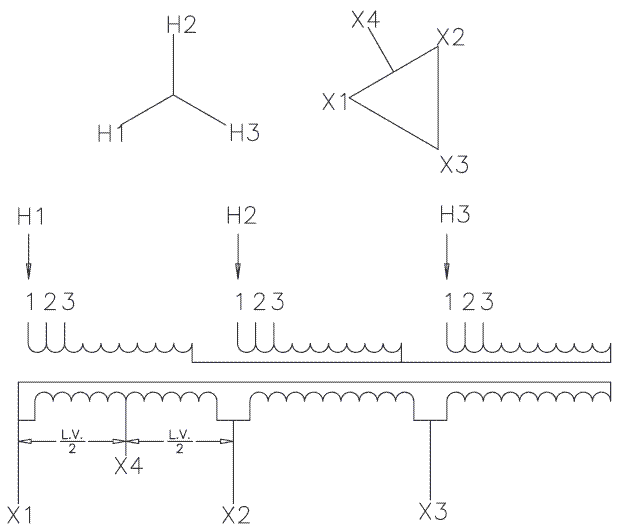NEC 408.3.E reads as follows:
The phase arrangement on
3-phase buses shall be A, B, C from front to back, top to
bottom, or left to right, as viewed from the front of the
switchboard or panelboard. The B phase shall be that phase
having the higher voltage to ground on 3-phase, 4-wire,
delta-connected systems. Other busbar arrangements shall
be permitted for additions to existing installations and shall
be marked.
What am I missing here? A 3-phase system that has a higher voltage on one phase? How is this possible? What am I missing? I thought one of the points of a 3-phase system was to have 2 distinct voltage levels (phase-phase, phase-gnd). How can I have a phase-gnd voltage that is different on only ONE phase?
The phase arrangement on
3-phase buses shall be A, B, C from front to back, top to
bottom, or left to right, as viewed from the front of the
switchboard or panelboard. The B phase shall be that phase
having the higher voltage to ground on 3-phase, 4-wire,
delta-connected systems. Other busbar arrangements shall
be permitted for additions to existing installations and shall
be marked.
What am I missing here? A 3-phase system that has a higher voltage on one phase? How is this possible? What am I missing? I thought one of the points of a 3-phase system was to have 2 distinct voltage levels (phase-phase, phase-gnd). How can I have a phase-gnd voltage that is different on only ONE phase?


